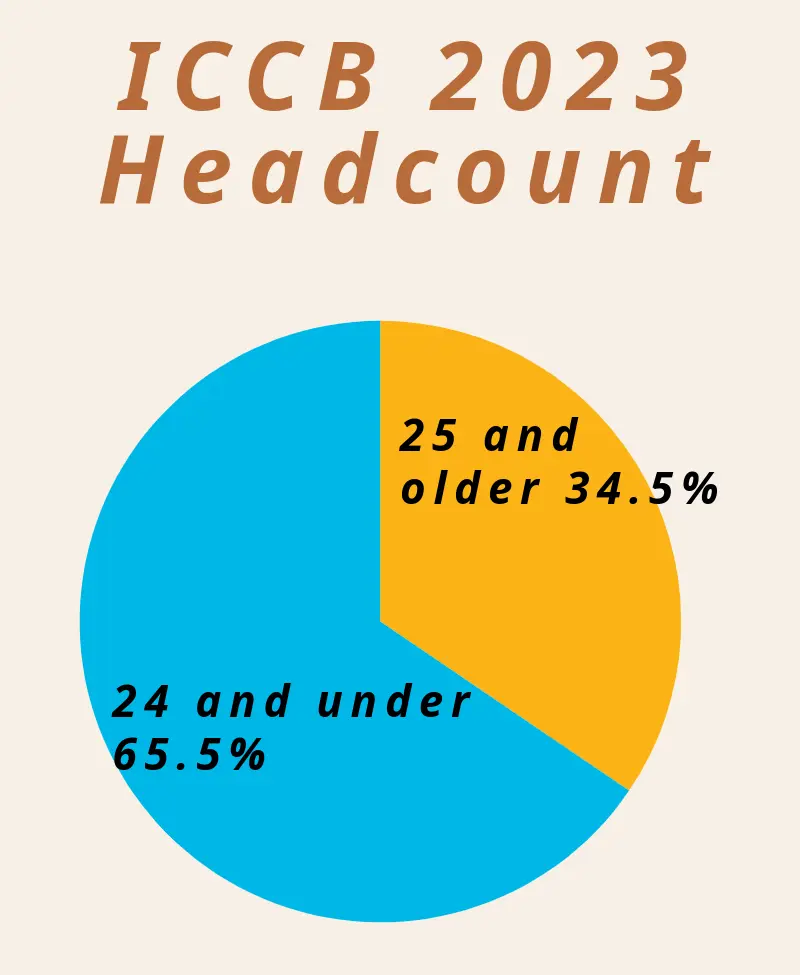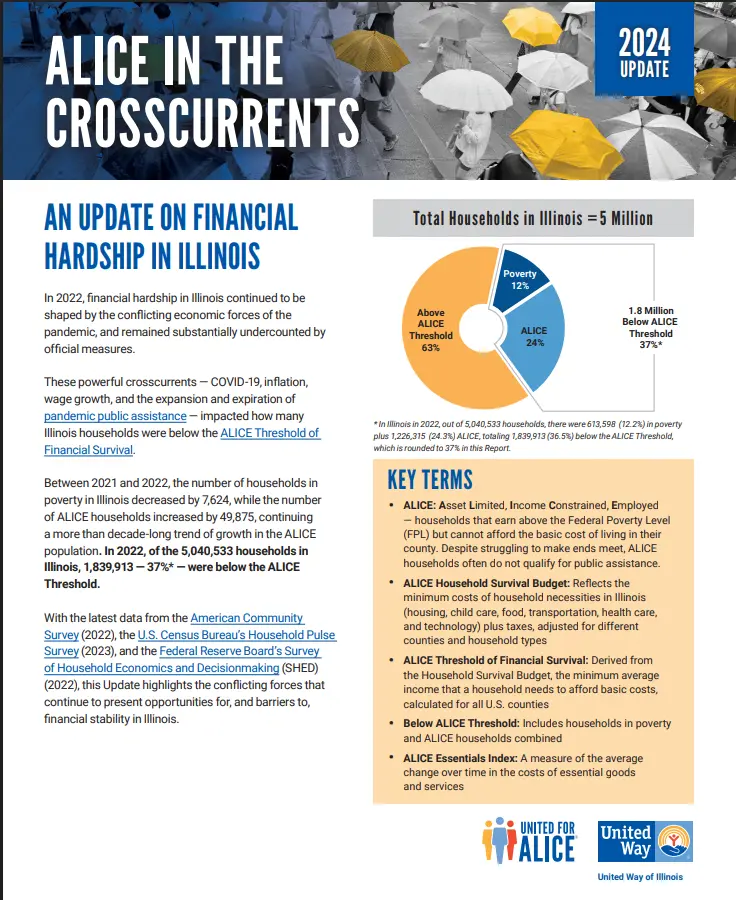How Prevalent are ALICE Adult Learners in Illinois Community Colleges?
 Adult learners have spent time away from school or are at a place in life where completing a program can be challenging. Some adult learners face additional challenges if they fall into the ALICE population. ALICE students are asset-limited and income-constrained although they are employed (ALICE). These adult learners are technically above the federal poverty line (FPL) and make too much to qualify for public assistance, but too little to meet their essential needs. Many adult learners fall into this group and this status can serve as a key motivator for enrolling in a community college.
Adult learners have spent time away from school or are at a place in life where completing a program can be challenging. Some adult learners face additional challenges if they fall into the ALICE population. ALICE students are asset-limited and income-constrained although they are employed (ALICE). These adult learners are technically above the federal poverty line (FPL) and make too much to qualify for public assistance, but too little to meet their essential needs. Many adult learners fall into this group and this status can serve as a key motivator for enrolling in a community college.
 United For ALICE reports that only 63% of Illinois workers in 2022 satisfied the ALICE Household Survival Budget for one adult and one school-age child. This means that 37% or 1.8 million Illinoisians are struggling to support their families yet do not qualify for public assistance.
United For ALICE reports that only 63% of Illinois workers in 2022 satisfied the ALICE Household Survival Budget for one adult and one school-age child. This means that 37% or 1.8 million Illinoisians are struggling to support their families yet do not qualify for public assistance.
Although Illinois community colleges do not directly collect statistical data about ALICE students, the state’s ALICE populations have grown by 16% since 2010. Illinois community colleges also awarded at least 73,455 Pell Grants to students in 2023 with exceptional financial need. The Illinois Board of Higher Education states that low-income students are more likely to take developmental courses and are less likely to remain enrolled or complete their degree or certificate programs. These are troubling findings for ALICE adult learners entering community college to improve their chances at landing a quality, high-paying job.
Adult learners are a diverse and resilient student demographic (Darnell et al., 2022, p. 12[1] ). Adult learners balance employment, caregiving, and parental responsibilities. Adult learners are their own sole source of income and financial support. Some have been recently released from prisons and jails while others are veterans and returning service members. Some are just arriving to the country as recent immigrants and refugees. Many adult learners are ALICE students. Some are returning to college while others might not have had prior college experience. With such a range of barriers and needs, community colleges have often sought guidance on how to serve adult learners.